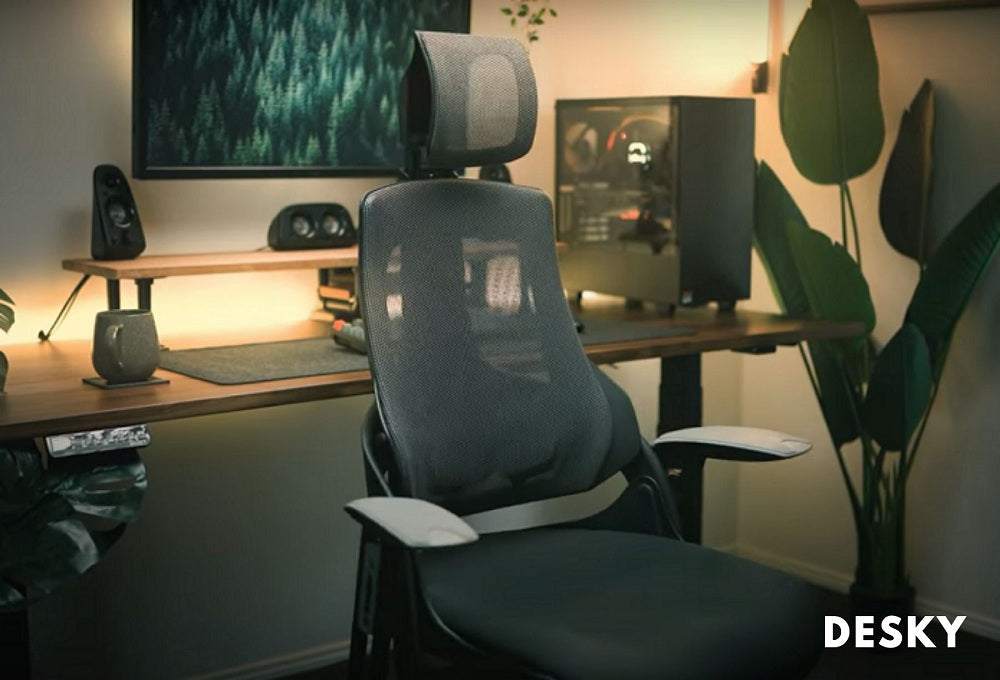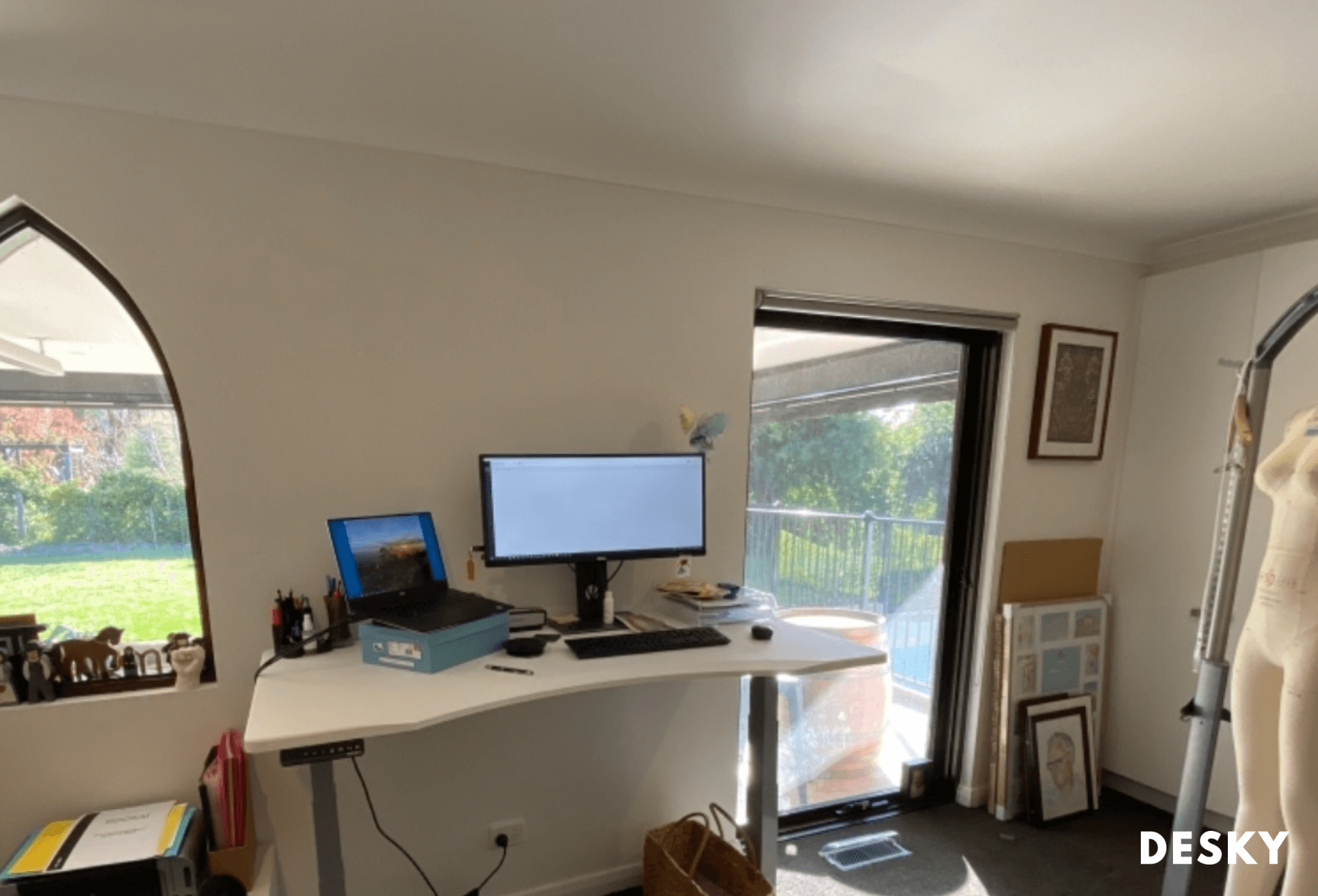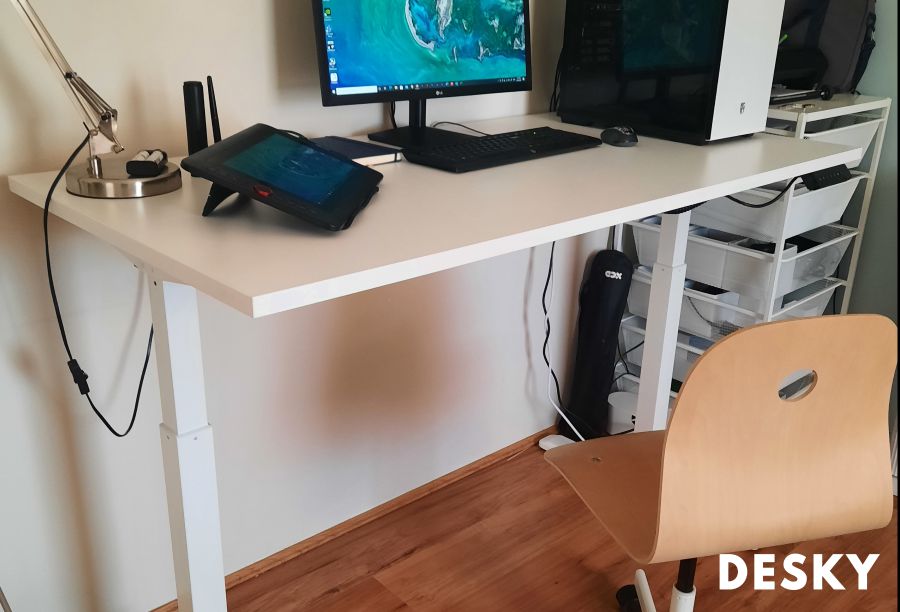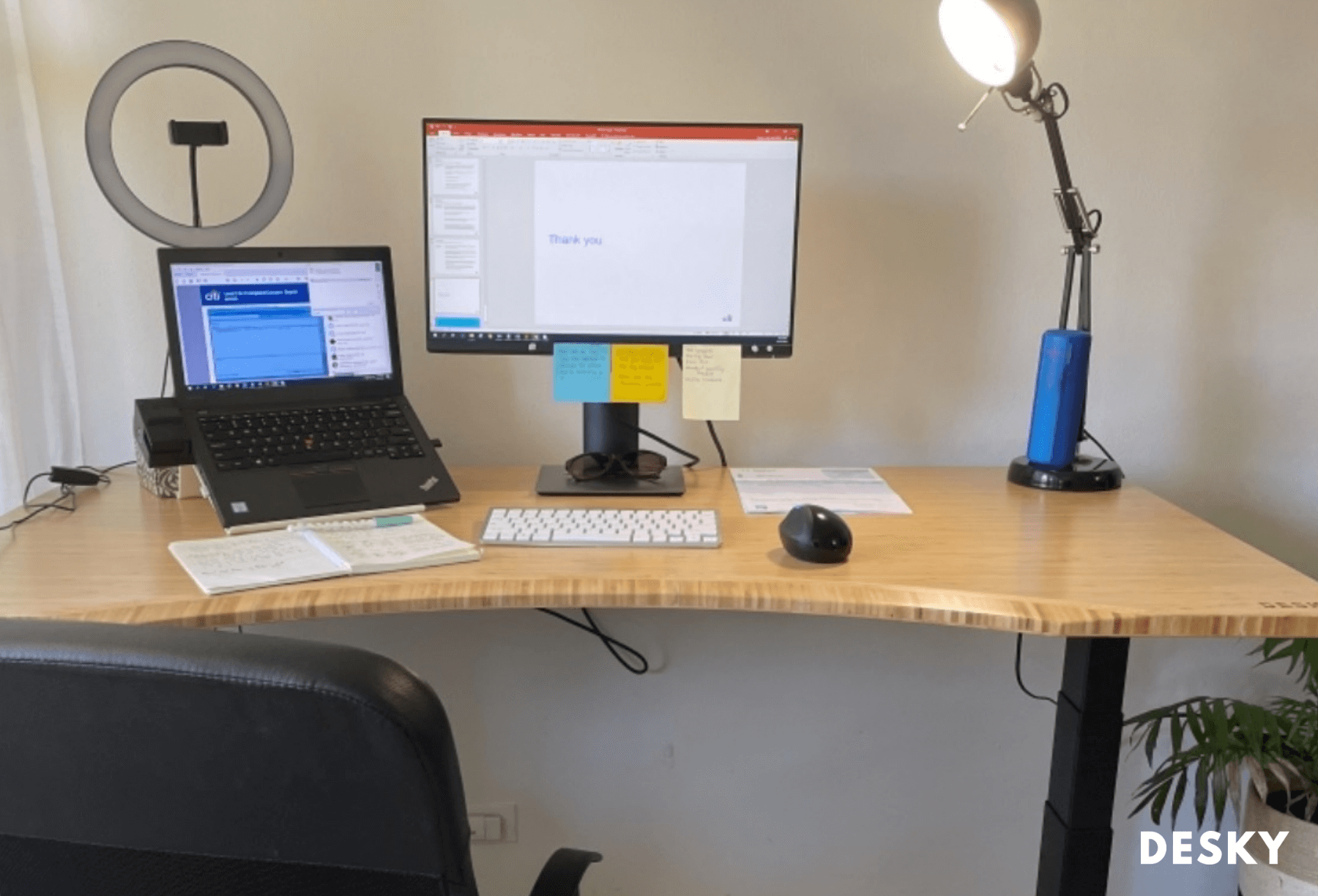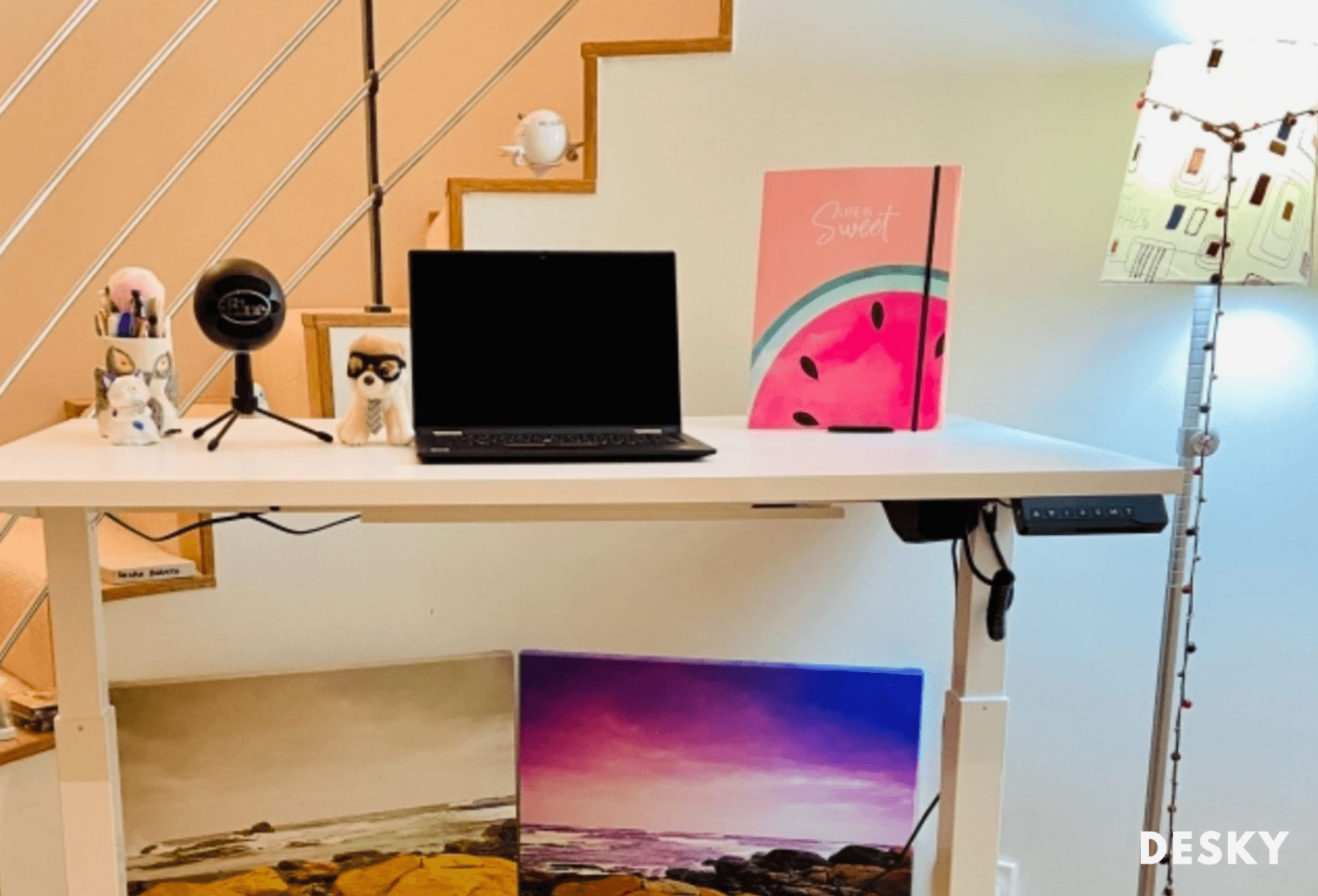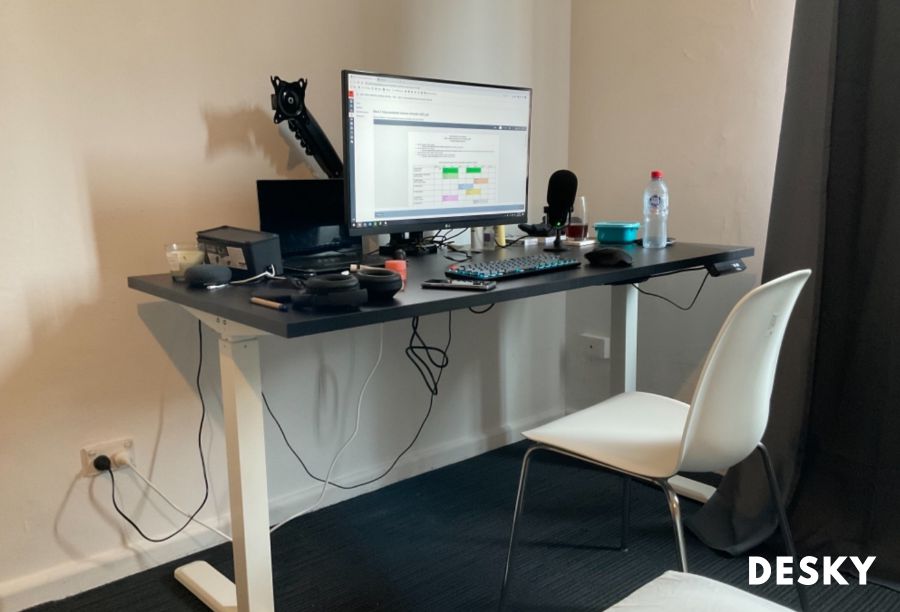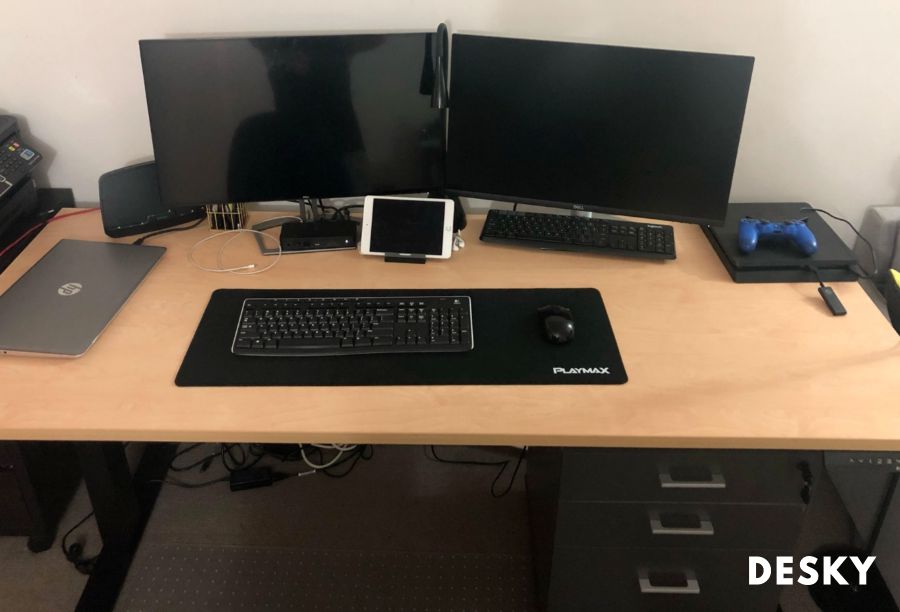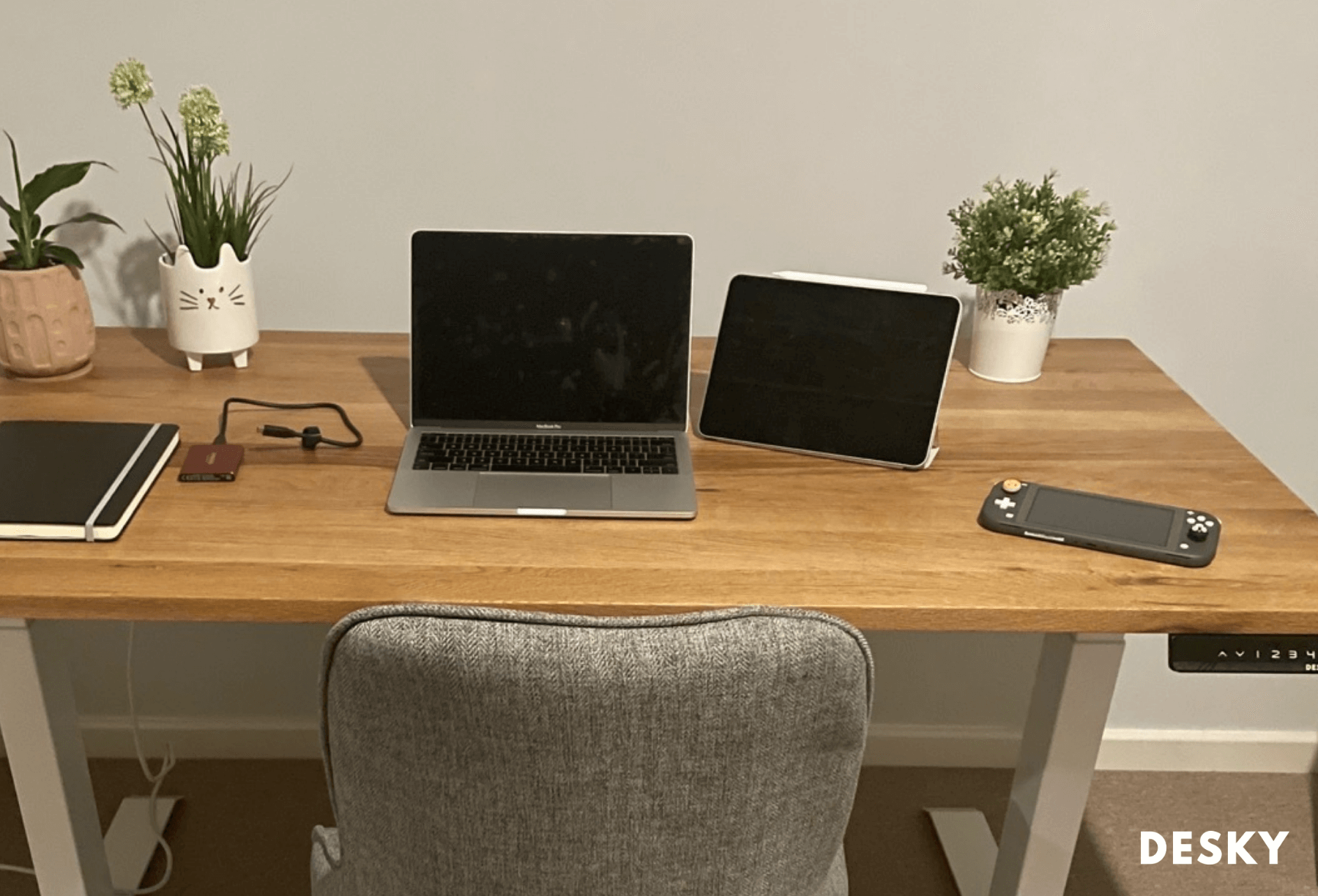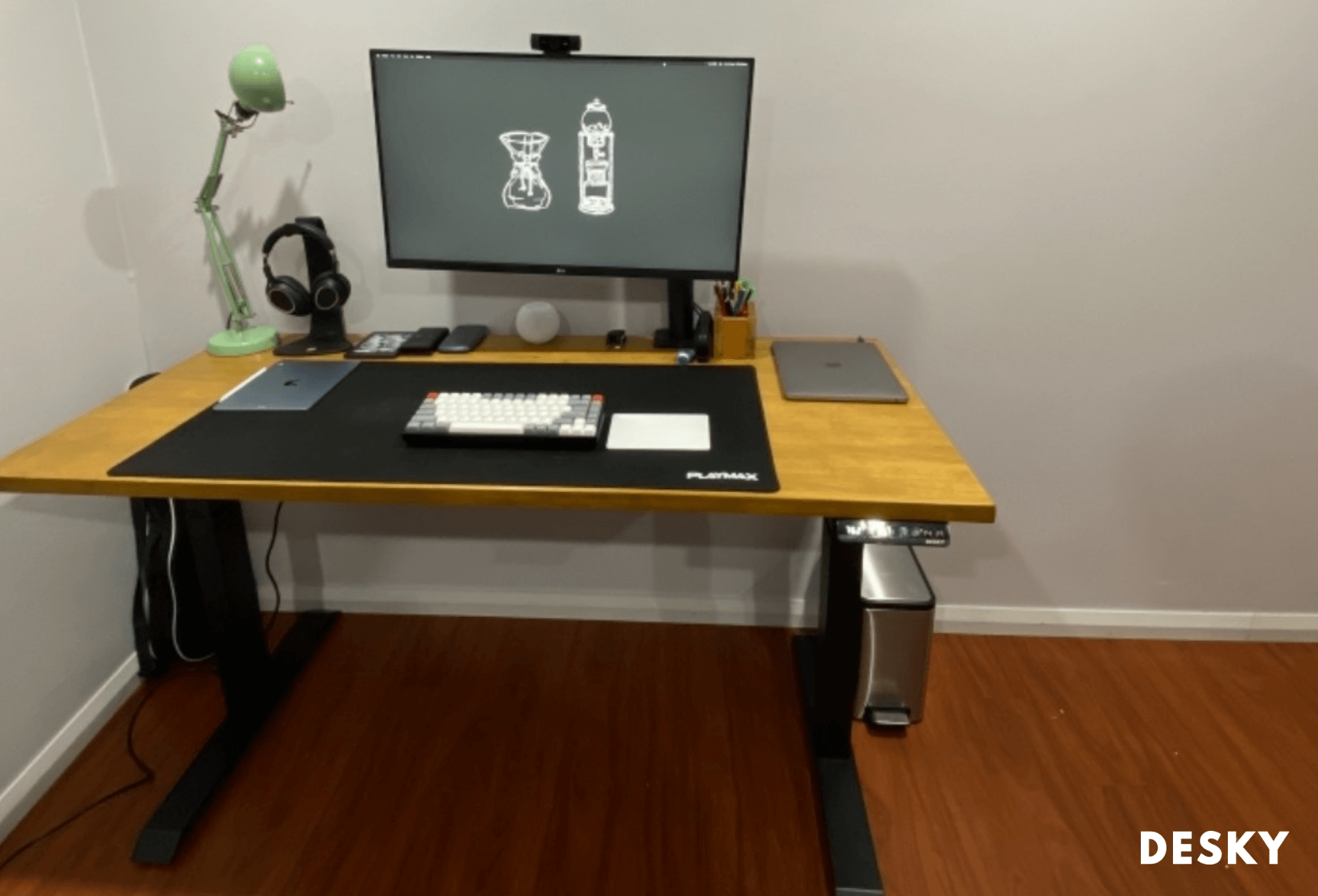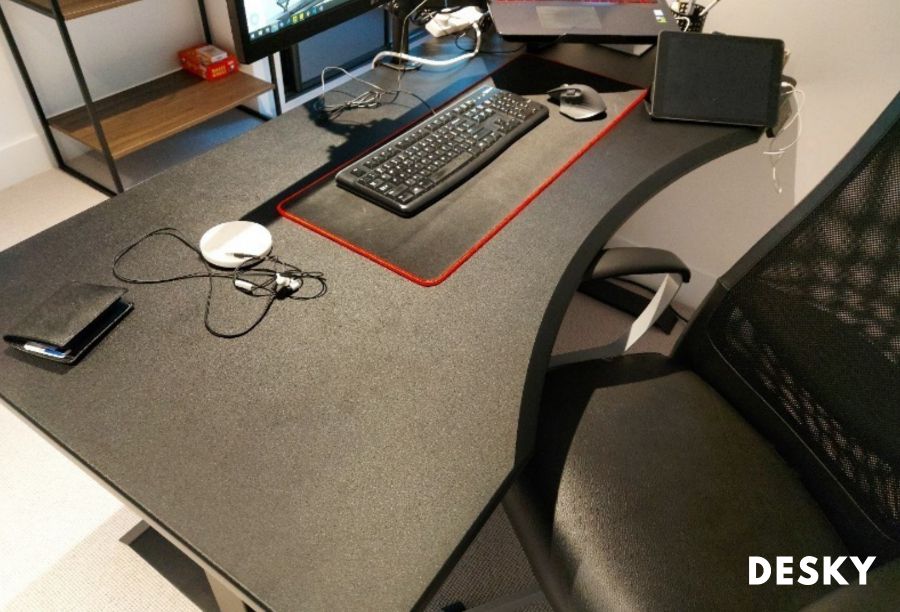Through the years, standing desks have become a popular option for workers, children, and students whose daily routine requires them to remain sedentary. Unfortunately, prolonged sitting increases the risks of health problems such as heart disease and diabetes. In addition, prolonged hours of sedentary behavior can be detrimental to your mental health, slow your metabolism, and increase the risk of musculoskeletal injuries.
While there are many ways to increase standing time, one way to promote reduced sitting is a standing desk. Not only can they help decrease the risks that come with prolonged sitting, but standing desks can also boost productivity growth, foster labour productivity growth, increase focus and cognition, and keep you active.
Are Standing Desks Good for Productivity?

Yes, standing desks can help improve productiveness. According to a study, sit-stand desks increased subjects’ factors of vitality in work engagement, and self-assessment of their performance rose.
However, like all good things, standing while working is best in moderation. In other words, studies have always emphasized that prolonged sitting can increase adverse health risks, but, at the same time, prolonged standing can lead to risks as well.
Let’s discuss the effects of prolonged sitting and prolonged standing further.
Effects of Prolonged Sedentary Behavior
Prolonged sedentary behavior can lead to:
-
High cholesterol
-
Increased risk of cardiac death
-
High blood sugar
-
Obesity
-
Increased possibility of diabetes
-
Some forms of cancer
-
Shoulder stiffness
-
Neck pain
-
Lower back pain
-
Mental health issues
Effects of Prolonged Standing
On the other hand, prolonged standing can lead to:
-
Lack of blood from legs veins to heart
-
Musculoskeletal pain
-
Lower back pain
-
Foot pain
-
Neck and shoulder discomfort
-
Dizziness
-
Carotid artery disease
-
Varicose veins
This is why many recommend sit-stand desks to increase efficiency. A sit-stand desk is height-adjustable, allowing people to rest and stand as they wish.
Does Standing Boost Productivity, According to Science?
According to scientific studies, increased standing time can lead to increased productivity. A study of call center employees who were also standing desk users resulted in productive improvements and improved mental focus for extended periods. Standing desks are just one method used to reduce daily sedentary lifestyle behavior for long hours and, thus, improve living standards. Here are some ways that standing can help.
Reduced Health Risks
With prolonged sedentary behavior comes higher risks of cardiac disease and diabetes. In general, giving your body a break from sitting can help reduce these risks, specifically if you spend a lot of time sitting in front of a computer. Any variation of a standing activity will help, and while using a sit-stand desk does qualify as exercise, they can help reduce sitting time.
The Center for Disease Control and Prevention (CDC) recommends that children and young adults between the ages of 6 and 17 should spend at least one hour a day engaging in physical activity.
Studies on the effects of reducing prolonged sedentary behavior with children in primary school showed improvements in a child’s overall health, self-esteem, and social behavior.
While everyone should commit to at least an hour of physical activity a day, most children, in particular, have heaps of energy that need to be burned off. A study involving a primary school in Ludwigsburg, Germany, advocated for installing standing desks in classrooms, accompanied by instructors' motivation during lessons to decrease sedentary time.
Decreased Pain

The leading culprit of discomfort from prolonged sitting is reports of lower back pain. While practicing good posture can relieve lower back pain, it’s not all that comfortable, if we're being honest. Reducing sedentary time by engaging in various standing activities like yoga, stretching, or walking can undoubtedly help musculoskeletal pain, especially chronic pain.
By reducing physical pain, it could help your body and brain be more present and engaged in work, school, or meetings. Another study using 60 male German college volunteers found that adjustable height workstations reduced overall complaints of musculoskeletal discomfort and increased employee productivity over a three-week period.
Increased Energy
Another issue with prolonged hours of sitting is low energy levels. Low vitality levels cause us to feel apathetic, lethargic, and fatigued. These effects encompass the feeling many office workers consider brain fog. Luckily, more standing can reduce these factors by increasing blood flow, which, in turn, can improve work engagement and performance satisfaction and instigate overall changes and benefits when it comes to productiveness and well being.
A study using customer care workers in a telecommunications company in Sydney, Australia, found that workers felt they had better-sustained vitality levels throughout their workday when they were given height adjustable desks. When physical capital and the overall production process can increase productivity, the employed persons produce more value and critical thinking during their hours worked, not to mention benefits such as better health outcomes and less physical discomfort.
Improved Mood
Standing desks can improve your mood because of the increased blood to your brain, reduced back pain, and better-sustained vitality levels.
Research shows that standing desks positively affect workers, children, and students. For example, standing desks increased overall mood and energy levels and reduced feelings of tension, confusion, and depression for employees. While these effects of standing desks aren’t measurements of how productive employees are, they certainly signal efficiency improvements in overall labor statistics.
While this research of sit-stand desks for employees, children, and college students resulted in a positive reduction of factors associated with prolonged sedentary behavior, the effects on growth remain unclear from the studies above. This is because measuring or attempting to track an increase in productiveness is difficult.
However, a study by Texas A&M University did find that, over a six-month period, adjustable standing desks made workers 46% more productive than those with seated desks. The researcher's method of employee productivity measurement was based on the output produced. Specifically, the productivity measured was from the number of successful calls per hour worked.
Do Standing Desks Help Focus and Cognition?
On a national level, standing desks and cognition may help focus and cognition if users use them properly for short and long periods. For example, someone with a sit-stand desk will reduce their sedentary time, but they may not reap the benefits if they’re standing improperly. Throughout the day, a standing upright position and decreasing excessive sitting may only mean overall health improvements if related ergonomic adjustments are made, such as the use of a monitor arm, an ergonomic office chair and anti-fatigue floor mat.
By improper standing, we mean poor posture. Poor posture could worsen effects associated with prolonged standing and, thus, not produce productivity improvements of focus and cognition.
Children are an excellent example of this, as they are more likely to lean and slouch on a standing desk. While the effects of increased cognitive function are uncertain, another academic study by Texas A&M did find that standing desks improve cognitive function.
Ranjana Mehta PhD., an assistant professor in the Department of Environment and Occupational Health at Texas A&M, used four computerized tests focusing on skills of time efficiency, memorization, reading comprehension, problem-solving, and thought organization.
The university found that standing desks “improved executive function and working memory capabilities… [and] changes in corresponding brain activation patterns.” In addition, reducing sedentary time improves focus and cognition by increasing the overall circulation of blood, more oxygen, and nutrients sent to the brain.
Another study found that, in general, standing can enhance attention and cognition. The study used the Stroop Color and Word Test, the cognitive test that asks participants to say the typed out word (that is a color) instead of the color of the word.
They found that participants had slightly quicker responses when standing rather than sitting.
Using a standing desk can help focus and cognition because standing not only requires more physical exertion than sitting, but it activates the brain to contract muscles and ensure the body remains balanced with the right standing height of the desk.
Do Standing Desks Make a Difference?

Yes, adjustable sit-stand desks can make a real difference in comparison to a traditional desk. For one, using a standing desk changes your daily living standards because it lets you decide when to stand and when to sit. Since prolonged sitting and prolonged standings both result in adverse health outcomes, you’ll have to determine the best times to sit or stand for you.
Studies have long discussed the adverse effects of prolonged sitting, so a sit-stand desk is one way to reduce the risks associated with such things as long as you're using a standing desk correctly. Schools and offices both have a work environment where people engage in prolonged sedentary behavior for over 5 per hour a day.
The government should consider creating incentives for workers using standing desks to boost public health. These incentives can help increase overall productivity. Based on the results, management can perform a productivity analysis to determine if there's an overall productivity increase when it comes to using the right desk and whether installing standing desks is worth the increase.
When people spend more time standing, they become more productive in general. For students, productivity growth is the key to success. For office jobs, encouraging high labour productivity levels for employees results in more output, higher energy level, better management practices, and overall productivity improvements.
Lastly, when people experience less muscular pain, brain fog, tension, and fatigue, they become better performers, more engaged, energetic, satisfied, and, most importantly, happy. Get health benefits like these when purchasing a sit stand desk from Desky and begin to add activity into your office day - let's move towards a healthier lifestyle!
source https://desky.com.au/blogs/news/standing-desks-help-productivity







